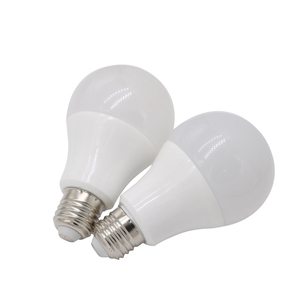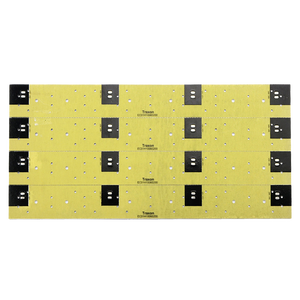(12551 products available)























































































































































































A light-emitting diode (LED) lamp is an electric light that produces light using light-emitting diodes. The light produced by LED lamps is efficient, and the bulbs are long-lasting and have a long lifespan. The LED lamps are used in a variety of applications, such as in devices like indicator lights and digital clocks. There are various types of LED lamps, and they include the following:
These lamps have a similar look to traditional incandescent lamps. The LED filament lamps use a thin filament of LED in the shape of a traditional coil filament. They have a vintage design that is suitable for use in exposed lighting fixtures like wall sconces and pendants. LED filament lamps are available in different shapes like globe, tube, and squirrel cage.
These lamps have a reflector or lens that directs the light. They are commonly used in recessed lighting, track lighting, and display lighting. LED reflector lamps are available in different sizes and bases and are suitable for use in commercial and residential applications.
These lamps are designed to provide an omnidirectional light output. They are available in different sizes, designs, and bases. LED globe lamps are commonly used in residential and commercial applications.
These lamps have a compact and elongated shape. They are commonly used in decorative and functional lighting applications.
These lamps have multiple LED chips in the shape of a corn cob and are enclosed in a transparent cover. They are suitable for use in post top lights, high-bay lighting, and street lighting. LED corn lamps have low maintenance costs and are energy efficient.
These lamps are used to replace traditional fluorescent tubes and are commonly used in commercial and industrial settings. The LED tube lamps are available in different sizes and types, such as T5, T8, and T12.
These lamps have a candle shape and are used in chandeliers, wall sconces, and decorative lighting. They are energy efficient and have a long lifespan.
These lamps have flexible circuit boards with surface-mounted LED chips. They are commonly used for accent lighting, cove lighting, and under-cabinet lighting.
The function of an LED lamp is to provide light using a light-emitting diode, which is a semiconductor device that produces light when an electric current runs through it. Here are some key features of LED lamps:
Many homes use LED lights for circuit boards in living rooms, bedrooms, kitchens, and bathrooms. This is because LED lights are long-lasting and energy-efficient. Homeowners often use several LED circuit lighting to create different atmospheres in various rooms of the house. LED lights are also used in closets to help homeowners find things quickly.
LED lights are suitable for emergency lighting in public and private buildings. This is because they turn on very fast and use little energy. LED light circuit lights are often placed along hallways and staircases in buildings. This helps people to see and evacuate the buildings safely during emergencies. LED lights also use batteries and solar panels as a backup power source. This ensures that the emergency lights will work even when there is no electricity.
LED lights are used as decorative lighting at home or in amusement parks. They are often placed on the patios, decks, and gardens of homes to create a beautiful outdoor living space. Also, LED lamps come in different colors, so they are used in clubs, concerts, and other events. These lights create a lively and fun atmosphere.
LED lights are often used in retail stores and showrooms. This is because they make the merchandise look more attractive. LED light sarkit lights are used in street lighting because they are very bright and use little energy. This helps save money on energy bills.
LED lights have become very popular in office buildings. This is because they can be dimmed or turned on very fast. Many offices use LED lights in the boardrooms, hallways, and reception areas. LED light ckt diagram lighting is also used in workstations. This is because they do not flicker, so they do not cause eye strain.
When sourcing for LED lamps for sale, there are several factors to consider to ensure that the products meet the customers' needs. Here are some of the most important ones:
LED lamps are suitable for a range of environments, from indoor to outdoor. Some types of LED lamps are not suitable for outdoor use because they are not waterproof. Retailers should provide their customers with LED lamps that can be used in different environments. Also, the LED lamp's operating temperatures should be considered. Some LED lamps work well on a specific range of temperature. For example, LED lamps that operate at low temperatures are well-suited for refrigeration units.
There are several types of LED circuits, including series, parallel, and series-parallel circuits. Series and parallel circuits are the simplest, but they are not commonly used in commercial lighting. Series-parallel circuits are used in street lights, office lighting, and residential lighting. Circuit diagram for led light lamps with parallel circuits are preferred because if one LED fails, the others will still work.
Most people prefer LED lamps with dimming capabilities because they can adjust the brightness to create a suitable atmosphere. These types of LED lamps are energy efficient and provide a longer lifespan.
LED lamps use different types of power supplies. For example, DC LED lamps use batteries, solar panels, or other DC sources. They can also be powered directly from the utility grid. DC LED lamps are energy efficient and safe, especially when there's a power surge.
LED lamps produce less heat than other types of lamps. However, they still require a heat sink to dissipate the heat and prevent overheating. The heat sink also helps to extend the LED lamp's lifespan. Some LED lamps have built-in heat sinks, while others require an external heat sink. Retailers should provide their customers with LED lamps that have built-in heat sinks because they are more convenient.
Lumen output is an important factor to consider when choosing LED lamps for different applications. The lumen output of an LED lamp is the measure of the amount of visible light it emits. Retailers should provide their customers with LED lamps that have the right lumen output for their needs.
Q1: Can LED lamps be dimmed?
A1: Yes, LED lamps can be dimmed. Many LED lamps are compatible with dimmer switches, which allows users to adjust the brightness. However, it is important to consider that not all LED lamps are dimmable. It is essential to check the manufacturer's specifications to confirm if the LED lamp can be dimmed.
Q2: What are the benefits of using LED lamps?
A2: There are numerous benefits of using LED lamps. LED lamps are more energy efficient than traditional lamps, which helps to reduce electricity bills. They have a longer lifespan and are available in a wide range of colors.
Q3: How can one know if a LED lamp is compatible with a dimmer switch?
A3: One can know if a LED lamp is compatible with a dimmer switch by checking the manufacturer's specifications. Some LED lamps are labeled as dimmable, or they may have a dimmable symbol. If the lamp does not have this information, it is recommended to consult the electrician.
The web search volume for the keyword "circuit led lamp" shows a monthly average of 10 web searches, with significant fluctuations over the past year. The data reveals a three-month change of -100% and a one-year change of 0%, indicating a stagnant interest level with occasional dips to zero web searches.
Analyzing the monthly search data, we observe a pattern of peaks and valleys. For instance, the keyword experienced zero web searches in December 2023, January 2024, April 2024, May 2024, June 2024, July 2024, August 2024, October 2024, and November 2024. Conversely, there were consistent web searches of 10 in February 2024, March 2024, and September 2024. This pattern suggests sporadic interest in the keyword, with periods of complete absence followed by brief resurgences.
The web search volume trends for "circuit led lamp" appear to be influenced by seasonal variations and market demands. The peaks in specific months could indicate seasonal projects or promotions that temporarily boost interest in LED lighting. Understanding these trends can help businesses in the lighting category plan their marketing and stock inventory more effectively, aligning with periods of observed higher search activity.